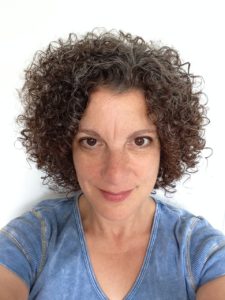[Editor’s note: Amy M. Miller was a finalist in the first HippoCamp conference scholarship contest, which included an essay prompt of ‘writing lessons learned.’ Hippocampus is publishing the winning and two runner-up essays in this, the previous, and next issue.]
Most of my literary influences didn’t sound a thing like me. Virginia Woolf compulsively detailed upper crust London; David Sedaris laughed about his dysfunctional family; Mary Karr conquered an abusive childhood; and Audre Lorde defied bigotry with a warrior pen. In contrast, I grew up Jewish, middle class, southern, and assimilated. I never experienced bigotry, nor suffered clinical depression. My neurotic tendencies earned a solid average in the DSMIV.
Then along came Marion Winik. I discovered Winik’s essay collection Telling in my twenties. At the time, I wrote short fiction, an occasional poem, and regularly scrawled in my bulging journals. Winik, a southern, ambivalent Jew like me, was a confessional essayist. These were the first personal narratives I had read that shared foibles, humiliations, and spit takes, begging readers to laugh along. For instance, in her essay “How Do I Look?” Winik ticks off the reasons for her terrible body image:
It was a long time ago. I was a tiny girl, no, I was never a tiny girl, I was a blobby girl, or, as I often thought to myself, just a blob . . . I was all wrong, I was not right, I was ashamed. Did I say a long time ago, I meant last week.”
Winik’s self-deprecating confessions are funny, poignant. She explains that the need to tell is driven by the promise of “at the very least, a bond between the teller and the tellee. At best, the big stuff: amnesty, redemption, grace.” As a seasoned writer, Winik shares her confessions as a means to relate and connect.
Reading Winik helped me stop ruminating alone; I started to share. At age thirty-seven, I published my first essay, a chronicle of a miscarriage. My second essay was published the following year in a women’s creative nonfiction magazine. But like Winik, I now lean more towards humorous self-disclosure because I can’t take myself — my problems, my children, my allergies, my life — seriously. With Winik I recognized a kindred literary spirit. Even when I wrote about more solemn matters — my mother’s battle with cancer, my loss of faith — I couldn’t help but make a joke at my own expense. I like to think it’s my inner Marion Winik.
In 2006, I attended a reading by Winik at the local Jewish Community Center. I was seven months pregnant and trying to keep my two-year-old daughter occupied when Winik walked over to me to chat, mother to mother. She towered over me with her mane of dark hair. I worried that my daughter might disrupt her, but she told me she was glad we had come. In true Marion Winik fashion, I felt the need to confess my abiding love of her first book of essays and as she listened, she inscribed the weathered copy of this same book: “Live to Tell. Tell to Live.”
 Amy M. Miller’s essays have appeared in [PANK], The Louisville Review, MOTIF, and Under The Gum Tree. She is a graduate of the Spalding University MFA in writing program, holds an M.A. in English, and is working on her first collection of essays as well as several children’s books. Amy lives in Louisville, Kentucky, with her husband and two children. To learn more about her publications, please visit www.amymmiller.com.
Amy M. Miller’s essays have appeared in [PANK], The Louisville Review, MOTIF, and Under The Gum Tree. She is a graduate of the Spalding University MFA in writing program, holds an M.A. in English, and is working on her first collection of essays as well as several children’s books. Amy lives in Louisville, Kentucky, with her husband and two children. To learn more about her publications, please visit www.amymmiller.com.

